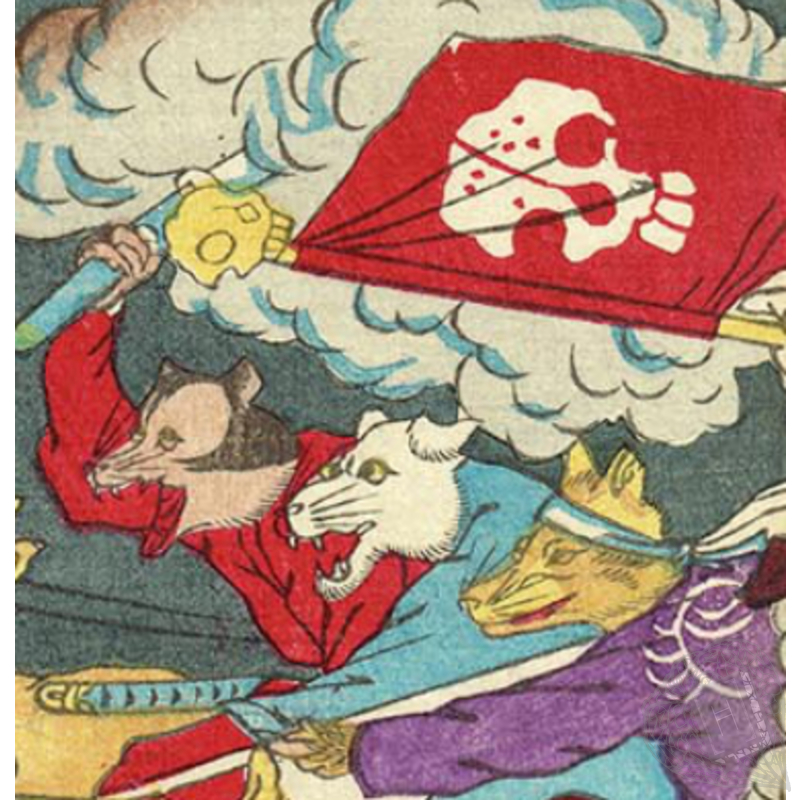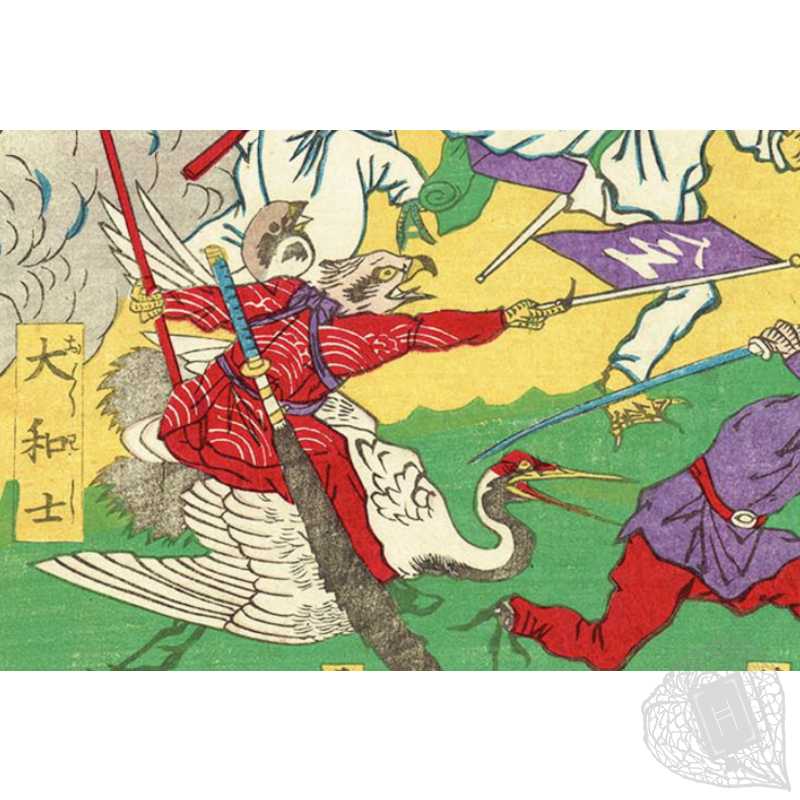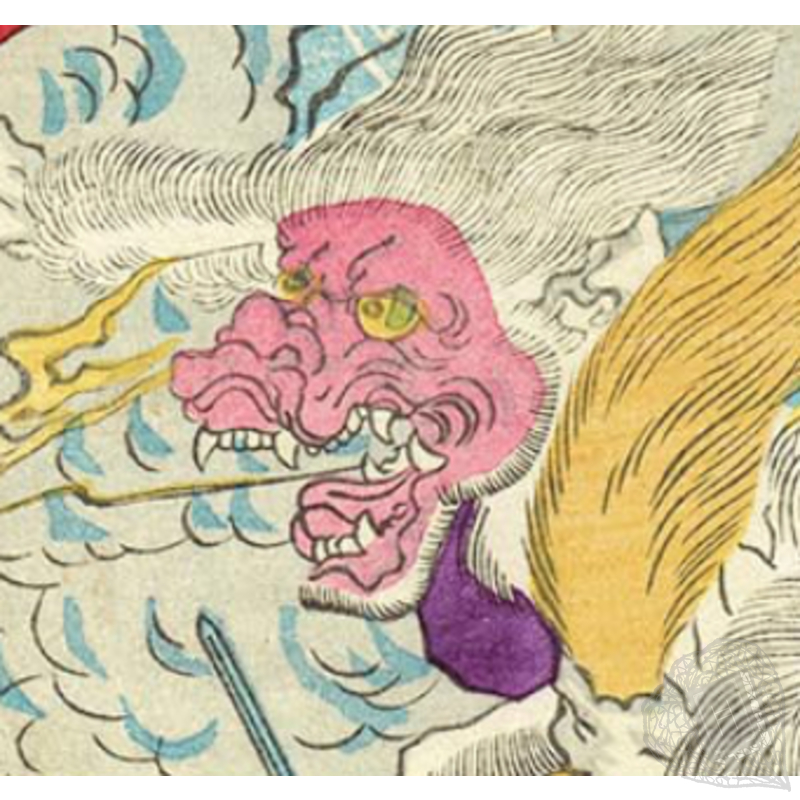Classic Illustrated Books Modern Art and Design Books Translations of Western Texts Japanese Literature Prints and Ephemera Western Books Photo Books Paintings & Scrolls Australia & New Zealand Others
Australia New Zealand Antarctica Japan Korea China Other
Edo Period [1603-1853] Bakumatsu Period [1853-1868] Meiji Period [1868-1912] Taishō Period [1912-1926] Shōwa Period [1926-1989]
Share this book on...

An unrecorded Aesop's Fables triptych
| US$5,395.00 |  ENQUIRE ENQUIRE |
 BUY BUY |
Tsūzoku Isoppu Monogatari, dai hachi-gō-bu-zu [“Aesop's Fables: illustration of number eight”]
Yamamoto, Ryūdō [illustrated by].
Kanda, [Tōkyō]: Takekawa Seikichi, Meiji 10 [1877].
An unrecorded triptych by Yamamoto Ryūdō (1845-1913), a pupil of Kawanabe Kyōsai (1831-1889), of a story from Aesop's Fables. The triptych was produced four years after Kyōsai's Aesop-themed nishiki-e series Isoho Monogatari no Uchi and Watanabe On's famous six-volume translation of Aesop's Fables titled Tsūzoku Isoppu Monogatari, also illustrated by Kyōsai. The fable depicted in this triptych is "The Bat, the Birds and the Beasts", the 86th fable in the Watanabe On edition, suggesting that the words "number eight" in the title should have been "number eighty-six". Despite the title, no other "numbers" by Ryūdō have been located. The fable is briefly recounted in the upper left panel.
It seems probable that the print was rescinded for being too political; the scene depicted parodies the Satsuma Rebellion, which started in January of the same year, and Ryūdō is known to have published a few other Satsuma Rebellion prints with the same publisher, Takekawa Seikichi. Kyōsai scholar Dr. Koto Sadamura has been kind enough to inform me that the "publisher's commercial intent must have been to sell this print as a kiwamono (topical theme), profiting also from the popularity of Tsūzoku Isoppu Monogatari".
Ryūdō seems to have focused on producing paintings rather than ukiyo-e, and his printed works have yet to be analysed in any depth by ukiyo-e scholars. With further analysis, the characters' names in this triptych may be matched with the names of figures active in the Satsuma Rebellion. No copies of this triptych have been located in online databases, and the prints, which are in fine condition, are thought to be unrecorded.
Three colour woodblock-printed leaves, complete. Occasional unobtrusive marks. Minor scrape to right edge and tiny wormhole to leftmost print. Overall fine. Each print measures approx. 34.6 x 24.4 cm. Text in Japanese.
With special thanks to Scott Johnson and Dr. Koto Sadamura for their generous help in researching this triptych.
# 9-10


• Ask a question about this item >
Classic Illustrated Books Modern Art and Design Books Translations of Western Texts Japanese Literature Prints and Ephemera Western Books Photo Books Paintings & Scrolls Australia & New Zealand Others
Australia New Zealand Antarctica Japan Korea China Other
Edo Period [1603-1853] Bakumatsu Period [1853-1868] Meiji Period [1868-1912] Taishō Period [1912-1926] Shōwa Period [1926-1989]
Share this book on...















